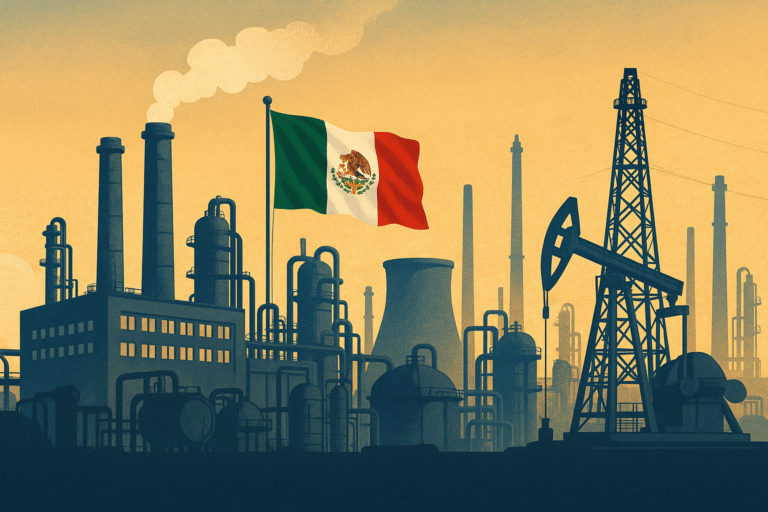Ensuring Compliance and Protecting Workers in Mexico: A Global Perspective on EHS Regulations
In the dynamic industrial landscape of Queretaro and Guanajuato, ensuring compliance with As foreign-invested industrial companies already operating in Mexico or planning to expand, ensuring compliance with Environmental, Health, and Safety (EHS) regulations is a key to success. In Mexico, particularly in states like Queretaro and Guanajuato, companies must adhere to both local and international EHS standards to guarantee worker safety, improve operational efficiency, and avoid costly penalties. At CAPSIA, we guide companies through every stage of their project, from setup to ongoing operations, ensuring they meet regulatory requirements and maintain a sustainable business.
Global EHS Regulations and Their Importance
Whether you are setting up a new facility or expanding existing operations, understanding and implementing EHS regulations from a global perspective is crucial. Many multinational companies are familiar with the need to comply with global standards like ISO 14001 for environmental management, ISO 45001 for occupational health and safety, and other country-specific regulations. However, in Mexico, businesses must also follow the local regulations set by the Mexican government.
Key EHS Regulations and Training to Ensure Compliance
CAPSIA offers specialized EHS consulting services and basic training courses to help foreign-invested companies understand and meet these essential regulations. Our courses are designed to provide a comprehensive understanding of the requirements, ensuring companies can avoid risks while enhancing their operational performance.
- Induction to Environmental, Health, and Safety Protection
This course offers a foundational overview of EHS regulations, emphasizing the importance of worker safety and environmental protection. It helps companies create a robust safety culture from the outset, ensuring that everyone is aligned with the best practices. - Fundamentals of Industrial Safety and Labor Risk Prevention
This training covers the critical aspects of industrial safety, highlighting the most common workplace hazards and the best ways to mitigate them. Understanding these fundamentals is essential for reducing workplace accidents and improving productivity. - Basic Industrial Safety Principles
This course addresses key industrial safety principles that are necessary for maintaining a safe work environment. From machinery safety to material handling, this training prepares employees to prevent accidents and ensure safety protocols are followed. - Workplace Safety Analysis (AST)
Through a systematic safety analysis, companies can identify potential hazards and risks in the workplace. This course equips companies with the skills to conduct thorough safety assessments and implement preventative measures, reducing the likelihood of accidents and legal complications. - Noise and Hearing Conservation
Excessive noise in industrial environments can lead to long-term hearing loss and other health issues. This course explains how to manage noise levels and implement hearing conservation measures, ensuring workers are protected from these hazards. - Personal Protective Equipment (PPE) Application
PPE is vital in protecting workers from potential injuries. This training ensures companies understand how to select, use, and maintain the appropriate protective gear to safeguard workers and comply with safety regulations. - Application of NOM-019-STPS-2011: Constitution, Integration, and Functioning of Safety and Hygiene Committees
In compliance with NOM-019-STPS-2011, this course provides essential knowledge on the formation and operation of safety and hygiene committees within companies. These committees are critical for ensuring that safety policies are enforced and employees’ health is protected. - Atmospheric Emissions Management
Companies must ensure that their operations do not negatively impact the environment, especially regarding air quality. This training covers the necessary steps to manage emissions and comply with environmental regulations, including how to monitor and reduce harmful air pollutants.
Why Compliance Matters
Adhering to these regulations not only helps protect workers but also boosts operational efficiency, minimizes downtime due to accidents, and strengthens the company’s reputation as a responsible employer. By investing in comprehensive EHS compliance, foreign-invested industrial companies can enhance their sustainability efforts, reduce operational risks, and create a safer working environment.
At CAPSIA, we are committed to helping companies in Queretaro and Guanajuato navigate the complexities of EHS regulations. Our team of experts provides ongoing support to ensure compliance from day one and assists with improving safety protocols as part of your company’s continuous improvement efforts.
Whether you are looking to establish a new plant or improve your current operations, CAPSIA’s expertise in EHS compliance, industrial regulations, and best practices can help safeguard your workforce and ensure your business thrives in Mexico. Reach out today to learn more about how we can assist in your expansion and ensure that you meet both local and global EHS standards.
References:
- ISO 14001:2015 – Environmental Management Systems (EMS)
International Organization for Standardization (ISO). Available at: https://www.iso.org/iso-14001-environmental-management.html - ISO 45001:2018 – Occupational Health and Safety Management Systems
International Organization for Standardization (ISO). Available at: https://www.iso.org/iso-45001-occupational-health-and-safety.html - Norma Oficial Mexicana NOM-019-STPS-2011 – Constitution, Integration, and Functioning of the Safety and Hygiene Committees
Secretaría del Trabajo y Previsión Social (STPS). Available at: https://www.gob.mx/stps/documentos/nom-019-stps-2011 - Environmental Protection and the Workplace Safety Regulations in Mexico
México’s Environmental Protection Agency (SEMARNAT). Available at: https://www.gob.mx/semarnat - Fundamentals of Industrial Safety
Occupational Safety and Health Administration (OSHA). Available at: https://www.osha.gov







